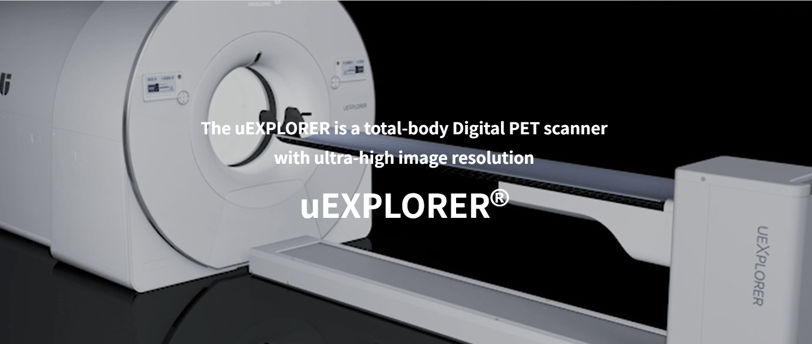The Incursion of United Imaging into the U.S. Market: What It Means for Healthcare
The U.S. medical imaging industry has long been dominated by legacy manufacturers like GE Healthcare, Siemens Healthineers, and Philips. However, a new player, United Imaging, has been making significant inroads, shaking up the market with aggressive pricing, cutting-edge technology, and a different approach to product distribution. But its rise is not without controversy—its backing by the Chinese government and potential cybersecurity risks have raised concerns among healthcare providers and policymakers. What does United Imaging’s expansion mean for the future of U.S. healthcare? Let’s take a closer look at both the benefits and risks.


Who is United Imaging?
Founded in 2011, United Imaging has quickly established itself as a major player in the global imaging market. It offers MRI, CT, PET/CT, X-ray, and ultrasound systems, with a heavy emphasis on AI-driven automation and efficiency. In 2018, it opened its North American headquarters in Houston, Texas, signaling its commitment to gaining a foothold in the U.S. market.
United Imaging differentiates itself in several key ways:
Aggressive pricing that undercuts legacy manufacturers.
Bundled features that do not require costly upgrades, unlike traditional vendors who sell features separately.
AI-driven workflow optimization, promising faster scan times and improved image quality.
While these advantages appeal to cost-conscious healthcare providers, deeper concerns about its government backing and data security practices warrant scrutiny.
Government Subsidies: A Level Playing Field or Unfair Advantage?
One of the most significant factors fueling United Imaging’s rise is the financial support it receives from the Chinese government. In 2023 alone, the company received $33 million in subsidies (Global Trade Alert). This funding enables United Imaging to offer lower prices and bundle premium features—a stark contrast to Western manufacturers, which rely on incremental feature upgrades as a revenue stream.
Implications for the U.S. Market:
✔ Cost savings for healthcare providers that adopt United Imaging’s systems. ✔ More competitive pricing from traditional manufacturers forced to respond. ❌ Concerns over unfair competition, as state-backed companies have a financial advantage that private firms cannot match. ❌ Potential geopolitical and trade restrictions, which could affect supply chains if the U.S. government takes a harder stance on Chinese medical technology.
The Data Security Debate: Should U.S. Hospitals Be Concerned?
A more pressing issue is data security and patient privacy. Medical imaging devices store and transmit sensitive patient data, making them attractive targets for cyberattacks. Given United Imaging’s ties to the Chinese government, some fear that its systems could pose a risk to national security or patient confidentiality.
Key Concerns:
Data Ownership & Access: Could sensitive patient data stored on United Imaging’s systems be accessed or transmitted to third parties?
Regulatory Compliance: Are United Imaging’s cybersecurity measures strong enough to comply with HIPAA and other U.S. privacy laws?
Broader Cybersecurity Threats: Given past cyber incidents linked to China, is it wise to integrate Chinese-manufactured medical systems into U.S. hospitals?
These concerns are not unfounded—healthcare is one of the most targeted industries for cyberattacks. For example, a breach involving a Massachusetts-based imaging provider exposed the data of 2 million patients (BankInfoSecurity). If vulnerabilities exist in United Imaging’s systems, the consequences could be severe.
What United Imaging is Doing to Address Security Concerns
In response to these fears, United Imaging has made efforts to demonstrate transparency and strengthen its cybersecurity posture:
Partnered with Clearwater, a U.S.-based cybersecurity firm, to audit and evaluate its risk management practices (United Imaging News).
Implemented an ISO 27001-certified security framework to meet global standards.
Earned Evaluation Assurance Level 3+ (EAL3+) certification, indicating a robust security infrastructure (United Imaging Compliance Policies).
However, whether these safeguards will satisfy U.S. regulators and healthcare providers remains to be seen.
Balancing the Benefits and Risks
United Imaging presents a double-edged sword for the U.S. healthcare system. On one hand, its lower costs and high-end imaging technology could benefit hospitals struggling with budget constraints and outdated equipment. On the other hand, geopolitical risks, data privacy concerns, and market disruption introduce new challenges that decision-makers must weigh carefully.
Pros of United Imaging’s U.S. Expansion:
✔ More affordable imaging equipment = potential cost savings for hospitals and patients.
✔ Faster and AI-driven imaging = efficiency gains and better diagnostics.
✔ Competition forces traditional players to innovate and adjust pricing.
Cons and Risks:
❌ Potential cybersecurity vulnerabilities due to foreign-manufactured equipment.
❌ Long-term reliability and service concerns, as United Imaging’s U.S. support network is still developing.
❌ Geopolitical tensions could disrupt operations, including potential bans or tariffs.
Final Thoughts: A Disruptor Worth Watching
United Imaging has forced the U.S. medical imaging industry to take notice. Its cost-effective technology and AI-driven innovation provide real benefits to healthcare providers, but its government backing and cybersecurity concerns introduce risks that cannot be ignored.
Hospitals, radiologists, and imaging centers must evaluate their priorities carefully:
If cost savings and advanced technology are top priorities, United Imaging may be worth considering.
If long-term service support and data security are major concerns, it may be safer to stick with established players.
Ultimately, United Imaging’s success in the U.S. will depend on how well it can address cybersecurity worries, maintain trust, and compete fairly in a heavily scrutinized industry.
Your Thoughts?
Do you think U.S. hospitals should embrace United Imaging, or do the risks outweigh the benefits? Let’s discuss.
